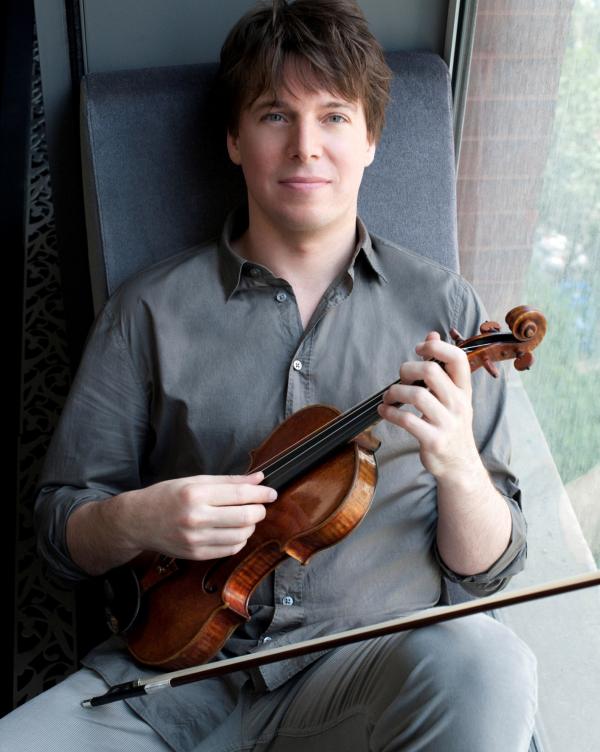Bell and Academy prove successful partners in Beethoven

Joshua Bell conducted and performed with the Academy of St Martin in the Fields Sunday at Symphony Hall
When the Academy of St Martin in the Fields came to Symphony Hall Sunday afternoon as part of the Celebrity Series, all eyes were on concertmaster and solo violinist, Joshua Bell. Literally.
The players needed to keep a sharp look out for subtle gestures from the concertmaster’s chair, as the program—all Beethoven, including the Coriolan Overture, Violin Concerto, and Symphony No. 7—was certainly not the easiest to negotiate without a maestro on the podium.
Safe to say, the players and the sold-out audinece both found what they were looking for. Sparked by Bell’s own superb musicianship the ASMF played with remarkable enthusiasm in a successful partnership.
Bell conducted from the concertmaster’s chair for the overture and the symphony, and assumed the usual soloist’s standing position for the concerto. The Mozart-sized orchestra had risers for the back sections, to increase visibility. But apart from that one practical nod, Bell commanded the ensemble largely through intuition, emphasized bowing, body language and, most importantly, the accumulated skill that comes from hours of rehearsal and years of playing together.
His conducting was hardly subtle, but effective. Coriolan, with its martial atmosphere, short phrases, stuck rests and forceful entrances, was perhaps the simplest challenge on the program for Bell’s leadership. A less-experienced ensemble might have struggled without a regular downbeat, but not this one. A few flat notes escaped from the horns, but the overall reading was crisp and dynamically varied.
The concerto was a marvel of clarity and style. If a generalization could be made about Bell’s approach, one might say that he emphasized subtleties in the concerto, and power in the symphonic works. The concerto felt like a relaxed dialogue—not the usual me-against-them conflict, but a natural offshoot of conductor playing as soloist. Bell’s own two cadenzas were of starkly different character. The first, as the opening movement drew to a close, was showy and long, full of double stops and virtuosic bowing, in sharp contrast not only to the intimate playing that preceded it, but the gently lyrical section that immediately followed, with Bell sketching out a sweet melody over pizzicato accompaniment. The carefully rendered bassoon solo by Gavin McNaughton) in the finale stood out because the rest of the playing seemed woven from a chamber music cloth: ensemble work, incorporating the soloist, of the highest order.
The symphony performance bore the mark of an ensemble with much experience, and yet much to say. The brass—filled out with four French horns—and the outstanding touch of timpanist Adrian Bending, balanced inspired playing from the strings. Raising the level of attention to match that of their extraordinary concertmaster, the string sections made each bow-stroke matter. Only in the interlude section (Assai meno presto) of the third movement did Bell forego his own playing to lead a complex passage in the winds. Several flute solos by Samuel Coles stood out for their pure tone, but it was the string lines, with Bell drawing out each phrase artfully and his ensemble following along, that made this interpretation matter.
The audience, of course, responded with unbridled enthusiasm. Of note was the players’ response: after the concerto and after the symphony, the ensemble didn’t just give Bell the perfunctory waving of the bows, but nearly all of them put down their instruments and applauded heartily like the rest of the hall.
Posted in Performances